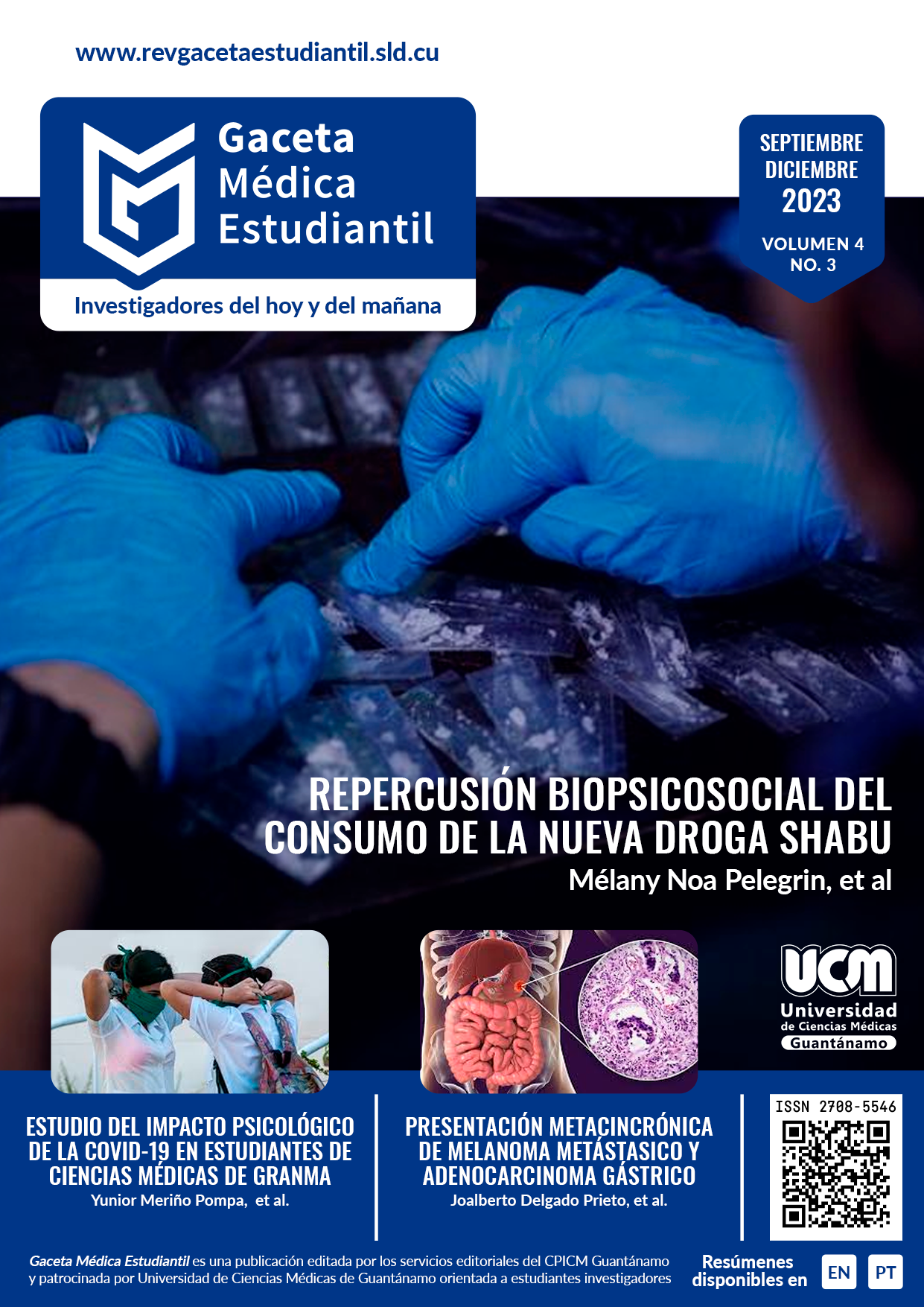Rubber dam isolation in difficult clinical conditions. A case report
Keywords:
adverse condition, clamps, endodontics, rubber dam isolationAbstract
Introduction: The rubber dam has several advantages, such as protecting the patient from aspiration of an instrument, preventing soft tissue laceration with rotary or manual instruments, improving accessibility and visibility, and preventing cross infection. Objective: to show the use of the rubber dam in a difficult clinical situation due to the position of the RE. Case presentation: 41-year-old patient came to the dental clinic with a history of acute pain in the lower right region for several weeks. The clinical examination revealed a deep carious lesion in the lower right third molar, affected for a year. Conclusions: the modification of the retainer prevents its subsequent rectification, so cases with extensive tissue loss or gyroversions must be planned in advance with the help of study models.
Downloads
References
Kontakiotis E. A novel rubber dam system for the simultaneous isolation of teeth and gingival tissues. Quintessence Int Berl Ger 1985. junio de 1995;26(6):395-8.
Ahmad IA. Rubber dam usage for endodontic treatment: a review. Int Endod J. noviembre de 2009;42(11):963-72.
Cochran MA, Miller CH, Sheldrake MA. The efficacy of the rubber dam as a barrier to the spread of microorganisms during dental treatment. J Am Dent Assoc. julio de 1989;119(1):141-4.
Liebenberg WH. Extending the use of rubber dam isolation: alternative procedures. Part III. Quintessence Int Berl Ger 1985. abril de 1993;24(4):237-44.
Van Dijken JWV, Hörstedt P. Effect of the use of rubber dam versus cotton rolls on marginal adaptation of composite resin fillings to acid-etched enamel. Acta Odontol Scand. enero de 1987;45(5):303-8.
Smales RJ. Rubber dam usage related to restoration quality and survival. Br Dent J. mayo de 1993;174(9):330-3.
Morgan LA, Marshall JG. Solving endodontic isolation problems with interim buildups of reinforced glass ionomer cement. J Endod. septiembre de 1990;16(9):450-3.
Estafan DJ, Harris B, Estafan A. A SIMPLIFIED APPROACH TO ISOLATING A SINGLE TOOTH BEFORE ENDODONTIC THERAPY. J Am Dent Assoc. junio de 1999;130(6):846-7.
Owens BM. Alternative rubber dam isolation technique for the restoration of Class V cervical lesions. Oper Dent. abril de 2006;31(2):277-80.
Castellucci A, West JD, editors. Arnaldo Castellucci. 1st ed. Vol. 1. Italy: Il Tridente Publishers; 2004. Castellucci A. Tooth Isolation: The Rubber Dam. Endodontics; pp. 226–7.
Van Meerbeek B, De Munck J, Yoshida Y, Inoue S, Vargas M, Vijay P, et al. Buonocore memorial lecture. Adhesion to enamel and dentin: current status and future challenges. Oper Dent. 2003;28(3):215-35.
Duke ES. The science and practice of dental adhesive systems. Compend Contin Educ Dent Jamesburg NJ 1995. junio de 2003;24(6):417-9, 421, 423-4; quiz 425.
Leinfelder KF & Kurdziolek (2003) Self-etching bonding agents. Compendium 24(6) 447-454, 456.
Cohen SC. Endodontics and litigation: an American perspective. Int Dent J. marzo de 1989;39(1):13-6.
Heling B, Heling I. Endodontic procedures must never be performed without the rubber dam. Oral Surg Oral Med Oral Pathol. marzo de 1977;43(3):464-6.
Rice RT, Jackson CR. Tooth buildup prior to endodontic treatment. Quintessence Int Berl Ger 1985. mayo de 1992;23(5):341-4.
Published
How to Cite
Issue
Section
ARK
License

This work is licensed under a Creative Commons Attribution-NonCommercial 4.0 International License.
The Gaceta Médica Estudiantil magazine provides immediate Open Access to its content. It is published under a Creative Commons Attribution-NonCommercial 4.0 International (CC BY-NC) license, which allows sharing (copying and redistributing the material in any medium or format) and adapting (remixing, transforming, and building upon the material), under the terms of acknowledge authorship and not make commercial use of the materials.












